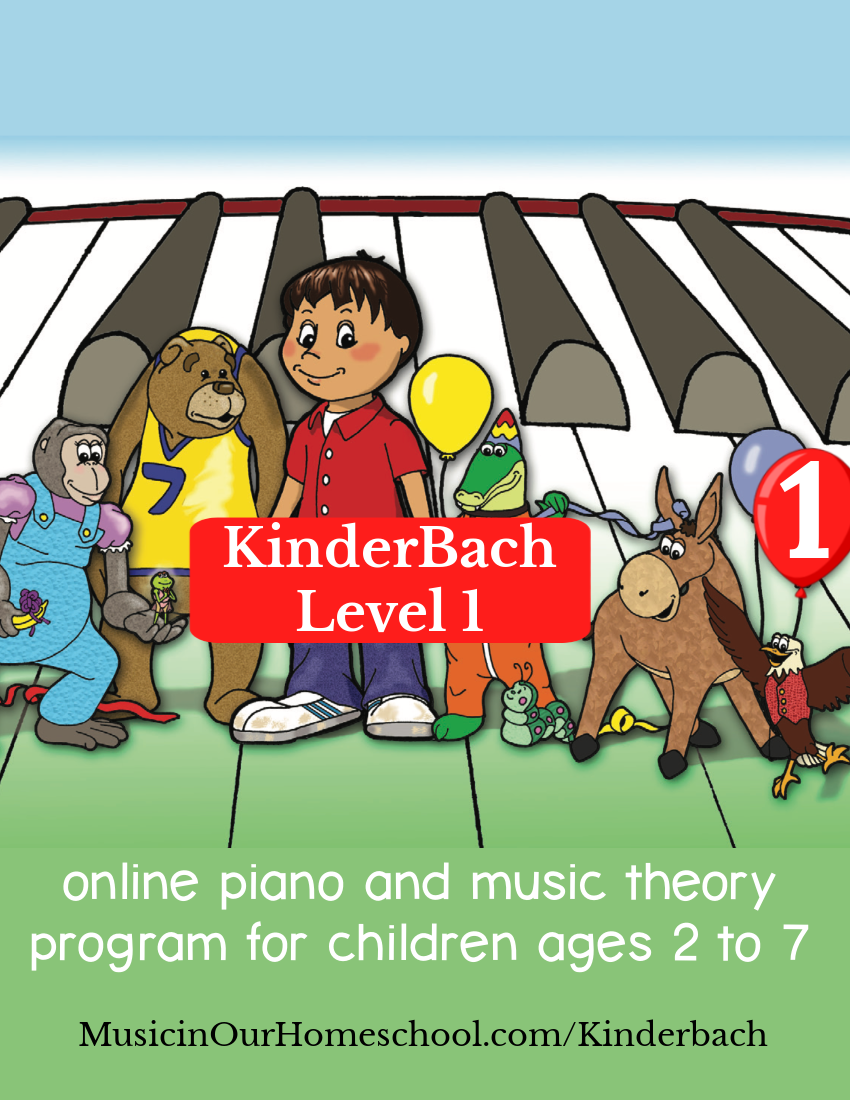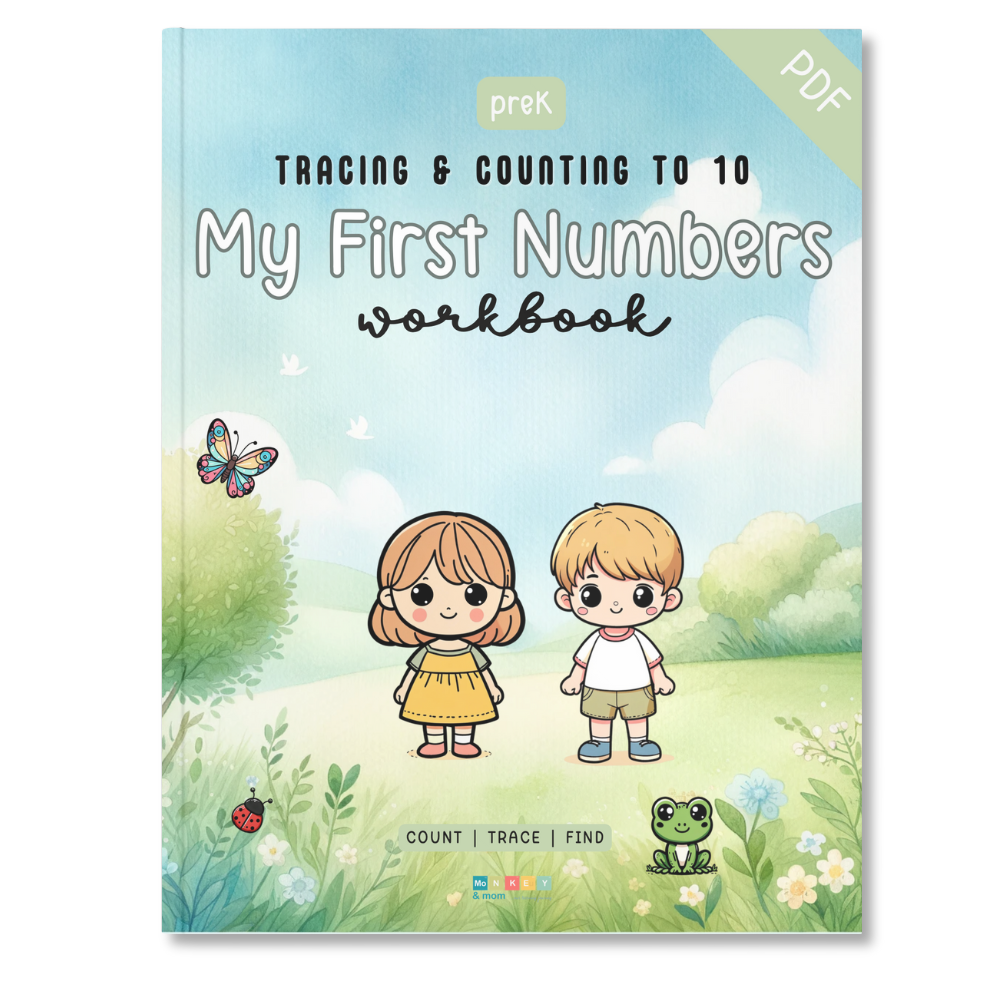Hands-On Science & Nature Projects for Upper Grades
Each of these resources is appropriate for middle and high school students. If you prefer family-style teaching, they can be tailored down, or you may eliminate some of the more complicated aspects, for elementary students. Want to create your own hands-on nature study? Download the unit study planner, and get started exploring your family’s interests!
Exploring the outdoors is a great way to learn! Soak it all in, homeschool mama, and wear your homeschooling style proudly!
 Think Like a Scientist
Think Like a Scientist
- Pi Game / Pi Day
- Measuring Practice
- Real World Math
- Math & Physics Round-Up
- Physics & Calculus for High School
Get Inspired
Take a Field Trip
 Get Outside
Get Outside
Go Wild
- Zoo Studies
- Permaculture
- Foraging Basics
- Forensics unit study
- Ecosystems unit study
- Endangered Animals Project
A Little of This; A Little of That
- Stars & Constellations unit study
- Holiday Science Activities
- Notebooking Pages for science topics
- Doughnut Math
- Botany Class
- Tinkers’ Club
- Tinkering Lab Kit
- Snap Circuits & Electricity
- Ultimate Coding Kit
 Explore through the Pages
Explore through the Pages
- Girl of the Limberlost & Butterflies
- Golden Hawks of Genghis Khan & Raptors
- Science of Breakable Things & Scientific Method
- Nick & Tesla 6-book Physics Bundle
- The Lorax & Earth Stewardship
- Fuzzy Mud & Microbiology
- Shouting at the Rain & Stormy Weather
- The Boy Who Harnessed the Wind
- The Call of the Wild
Use a Complete Curriculum
- Energy Science
- Homestead Science
- Farming & Ranching Plan
- Berean Builders
- Apologia vs Berean
- Friendly Biology
Hands-On Subscription Boxes You’ll Love!
MATTER
We search planet Earth for the most interesting forms of matter. Each month we ship fossils, tools, specimens, materials, or artifacts that have been carefully selected as some of the most interesting pieces of matter in our accessible universe. Part museum, part laboratory, perfect for quarantine! Feed your curiosity or spark someone’s else’s. This one is for the kid who knows everything!! It will spark an interest for further research…Beautiful Discovery
Beautiful Discovery kits use visually and kinesthetically engaging patterns of nature to unleash your hidden pattern power and give you STEAM skills. Items include eco-games, art, origami, drag and drop code, models, natural wonders, full color informational cards, full color picture books and booklets, paints and colored pencils, drawing sheets with art lessons on patterns seen in the natural wonders.Perfect for the student who is hesitant about math, but all about art! This box combines the beauty of nature with real-world math through projects with seashells, crystals, dried leaves, flowers, for their beautiful patterns. There’s even an computer coding element with simple drag and drop block coding that will simulate the patterns seen in the natural wonders studied in each box.
Spangler Science
Let’s make science fun one month at a time! A subscription to Spangler Science Club is a guarantee that we’re working together to prepare your young scientist for a future STEM-based career. Choose from one of three levels of hands-on science kits and subscribe to amazing science delivered every month!
Groovy Lab in a Box
With Groovy Lab in a Box, you will receive boxes full of everything you need to learn about and do hands on science, technology, engineering, and mathematics (STEM) experiments for ages 8+. We blend Scientific Inquiry and the Engineering Design Process, which allows children to create ingenious inventions, enhance problem solving skills and FUN!Homeschooling Teens: College or Career Track?
.jpg)
General High School Help
- Must-Read — Teens’ Guide to College and Career Planning
- Before this homeschooling life, I worked with eighth, ninth, and tenth graders…and loved it! Teens are so exciting. They are old enough to have a real, heavy conversation with (and it’s really fun to explore the basis for their opinions), but young enough to still need and want guidance (even if they won’t admit it). From those years of experience, my experiences with my own children, and just the sheer memory of being a teen myself….here are five suggestions for motivating your student.
- The Homeschooling the Upper Grades e-book is a collaboration project with bloggers from around the world, covering a wide variety of topics and issues facing the homeschooling parent of teens. Twenty-two topics spanning special needs learners to academically gifted, and college to career-oriented students, are covered in this free download.
- Worried you’re going to miss one of the pieces for moving from homeschool to college? Here is the help you want with transcripts, scholarships, and making the transition! In Through the Door, you and your teen will work through thirty-three modules to smooth the way from homeschool to college life.
- Looking for high school help? It’s not the academics for high school that are nerve-wracking so much as it is all of those ‘special things,’ like testing, applications, and deadlines that must be met for a smooth transition into college.
Career Exploration
Maybe your teen knows exactly what s/he has wanted to be since childhood. Maybe they have no idea. A little career exploration is good for both scenarios, as it helps to better understand what those jobs truly entail…
- Must-Read — Career Planning for Teens: Discover The Proven Path to Finding a Successful Career That’s Right for You!
- Career-focused electives can be a good way to make high school fun, to bring some moments of levity to a day crowded with the intense courses found in these upper grades, particularly in a college prep scenario. What is your child interested in? Which hobbies does s/he gravitate toward? Are there any career interests yet? This is a good way to let colleges know more about your student, as they see which electives made the cut and ended up on the transcript.
- Career Exploration guides seventh through twelfth grade students to discover their career path or college major. This eight-week elective course provides possible directions to the next step. Each lesson includes informative articles, self-inventory worksheets, relevant links to additional information, and inspiring true stories.
- The Career Center offers a whopping fifty-five different courses, ranging from eight weeks to full-year, to help your student further explore their interest and see if it is a good fit.
- Parents can also pull together resources to create a year-long, career-based course for their student’s interest – such as this one on Architecture. For technical or hands-on careers, check with your local community college to see if they have dual-enrollment high school programming.
Maturity / Relationships
Teens are navigating a tricky time of life, caught between the worlds of adolescence and adulthood. Now is the time to talk about all those hard things…before they take the next step.
- Ask Powerful Questions
- Explore the clarity of intent, connecting through rapport, creating openness, reflective listening, and empathy. How can we explore the space between ourselves and others, and exchange meaningful perspectives? Just ask—powerfully.
- Fourteen Talks by Age Fourteen
- The fourteen essential conversations to have with your tween and early teenager to prepare them for the emotional, physical, and social challenges ahead, including scripts and advice to keep the communication going and stay connected during this critical developmental window.
Read Prior to Graduation
- Gender-based lists — Obviously you can read from either list, but they are sorted by traditional interests
- 114 Books to Read Before College
- This book list is designed for 8th – 12th grade college-bound students, and includes many classic pieces of literature as well as more modern day stories. The books represent a range of historic eras, and include elements from both American and World Literature courses.
Organizational Skills
Whether it’s a bedroom, an office, or digital life, having a good system of organization can save your student time and trouble down the line…
- Must-Read — Adulting 101: A Complete Guide on Life Planning, Responsibility and Goal Setting
- A good planner works for you and your needs. What is right for one person may not be the best option for someone else, so take a moment to investigate several options and find the one that works best for your student.
- There are as many different forms of note-taking as there are students. Follow these four rules for note-taking, and you should see marked improvement in your academics!
- You probably began writing essays in middle school, and started writing longer ones in high school, but as you enter the collegiate field, you’ll be required to write more complex and effective essays. It’s important to understand how to clearly communicate.
Life Skills
Resources for a wide range of students and their needs…
- Must-Read — Life Skills for Teens: How to Cook, Clean, Manage Money, Fix Your Car, Perform First Aid, and Just About Everything in Between
- After eighteen years of caring for your child, it can be alarming to realize that on that magical birthday, they suddenly take on ALL the responsibilities of adulthood, whether they are equipped or not. There are ways, however, to have some legal protections in place ahead of time.
- New hire paperwork, your first W-2, and all the financial basics in between…your teen needs to understand the ABCs of taxes.
- Whether you’ve experienced troubles or enjoyed something, a business letter or follow-up to a phone call is a life skill that all teens should learn. These letters aren’t just for expressing displeasure — they’re also a great opportunity to point out what’s right with your product / service.
- It can daunting to think about what post-graduation brings for the special needs student, but s/he is in a great position as a homeschooler! In the upper grades years, homeschooling allows students the time to explore passions and career interests. Take some time to examine your special needs student’s strengths, combining those and their interests to find a career exploration starting point.
Thinking Skills
Critical thinking is something every parent should help foster, age-appropriately, from the earliest years. We want our teens to go out into the world with eyes wide open…
- Must-Read — Do the Hard Things: A Teenage Rebellion Against Low Expectations
- Looking to focus on critical thinking skills? This Guidebook Set features four books, each with multiple lessons that are direct, concise, and help students relate concepts to their daily lives. Two of the books are designed to make students think about thinking and thought processes. The other two books are motivational and inspirational in nature, showing examples of people who trudged through difficult times to make a difference in the world.
- You can download a free curriculum guide for using this series in a year-long elective class.
- Literary Adventures for Kids is a language arts curriculum that fosters both writing and critical thinking skills. There are five different year-long classes to choose from, each including a blend of classic and modern books and encouraging students to ‘think beyond the book.’
- Learn more about this curriculum for high school, as well as for younger students.
Technology Skills
We live in a digital world, and any path your student chooses is going to require certain technological skills…beyond the cell phone.
- Must-Read — Future Skills: The 20 Skills and Competencies Everyone Needs to Succeed in a Digital World
- Regardless of the path, all students need to become familiar with the Microsoft Office family. This elective curriculum uses project-based learning to teach critical thinking, problem-solving, research, and out-of-the-box thinking skills. It celebrates students’ creativity and innovativeness and allows students to learn by creating solutions, all while introducing learners to a full range of Office skills.
- Using short, online unit studies, this site introduces your student to apps, online programming, and other ‘new tech’ being used currently in both educational and on-the-job settings. Students develop skills and practice through short, fun projects.
- The Guide to Digital Student Projects is an excellent starting point for learning how to organize via computer (as opposed to the old-school, paper method).
Test Skills
We all know that test skills are a must for college entrance exams, plus academics in general, but many careers require occasional training and testing as well. It’s good to brush up on those skills…
- Must-Read — Mind Over Scatter: Conquer Any Test with Sharper Focus and Less Stress
- Do you have high school students who are considering college? One of the steps they’ll need to take is standardized testing. This is especially important for homeschooled students as it helps to provide outside validation to the grades on their transcript.
- Even if you know the material and are prepared for your test, it’s completely normal to experience test anxiety. In fact, to a degree, anxiety helps you perform better on the test! However, too much can prevent you from doing your best…so what test skills do you need?
Three Out-of-the-Ordinary Homeschool Goals for Your Child with Special Educational Needs
Today’s post comes from Sharon Czerwien, who loves homeschooling her two children, one with Sensory Processing Disorder. Sharon is the author of the children’s book, “Bumps Are Okay for KIDS and Other Biblical Lessons Learned from Monster Trucks!” She blogs at www.bumpsareokay.com.
Does the following conversation sound familiar to you:
-Child: “I hate school! I don’t want to do school today!”
-Parent: “Well, at least you don’t have to be in school for 7 hours every day. You should be glad that I let you have so many breaks and give you the opportunity to bring your favorite things to the school area…”
I have had these conversations with one of my children (on several occasions!), and I have not always said the above part in the most patient of ways. I am a work in progress.
One of my children has Sensory Processing Disorder. School can be hard, frustrating, angering, and discouraging for this elementary-aged child.
The Understood Team writes that Sensory Processing problems involve:
“…Trouble managing information that comes in through the senses. These issues, sometimes called sensory processing disorder or sensory integration disorder, can have a big impact on learning and on everyday life.” [1]
No matter if your child struggles with this sensory need or with any special need that directly affects all-things life and school, I hope you can find encouragement from the Understood Team. Online, this team makes it their mission to guide those who think and learn in ways other than “the norm.”
Encouragement for Special Need Families
If you have a child who has special educational needs, please take hold of the following:
YOU are the best person to help guide your child through his or her different adversities. Whether in educational hurdles or life challenges, you know your child best. You are your child’s greatest cheerleader and support system. YOU are just what your child needs!
Home Educational Goals for Special Need Families
When it comes to homeschooling goals for special needs families, here are some “goal traps” that may creep up unexpectedly. By “goal traps” I mean homeschool goals that may accidentally be given too high of a priority for a child with special needs.
- That your child stays at grade-level in each subject
- That your child goes through the same amount of material each year as your other child
- That your child needs to learn basic math facts or phonics principles in the “correct year”
- That you as the parent must cover everything on your child’s daily school checklist
Hopefully, removing these “goal traps” will open you up for these “out-of-the-ordinary” homeschool goals.
*Here are three “out-of-the-ordinary” homeschool goals to think through:
- For your child to not hate learning—as much as possible!
I know—you have the right to say, “Wait! At the beginning, you said that your child hates school. Why is your own homeschooling goal not being met?”
My child would honestly tell you how much he hates school. That is why I included the phrase, “as much as possible.”
Hard school will be hard for your child. Your child’s special needs will be hard, and understandably, you cannot remove all hardships from your child. However, throwing out the above “goal traps” will immensely help your child not to hate school more than necessary.
It is okay if your child is not on “reading level” or cannot start learning multiplication facts during the same year as other age peers. You know your child best, and a slower pace may be necessary AND be just what your child needs to have personal educational success in your child’s right educational timing.
In my case, I need to not overly push my sensory child beyond what my kiddo is capable of in that moment, resulting in needlessly causing my child to hate school even more. I must give priority to my child’s sensory needs before any educational goals can be met.
- For your child to learn to persevere!
I view it as more important that your child have experience and practice in what true perseverance looks like than to learn division rules in the “right” year.
Your precious kiddo has more opportunities to stretch in this area of perseverance than many other children. Look for any (even small!) examples of your child having a persevering attitude and highlight these in a special way.
You can keep track of perseverance moments in a special-to-you way and review these with your child often. Encourage your child that he or she is doing great at doing hard things!
Perseverance examples do not have to only happen in school. Your child may show perseverance in a big way outside of school time. These can be highlighted, too! (In the picture, you can see how we document perseverance moments through our “perseverance notebook” filled with example pictures.) [Insert Picture]
- For your child to learn to self-regulate!
Having your child be the top speller is not nearly as important as he or she learning to deal properly with frustrations.
I like the book, The Most Magnificent Thing by Ashley Spires. The main character in the story learns about the importance of breaks when her anger gets too strong. With this book as a springboard, you and your child could work through ideas to help when your child feels the anger boiling inside.
The Takeaway
Home education is a beautiful way to work with your special needs child at the right pace, to take the right breaks, and to reach more than just the traditional school goals.
I cheer you on! There is nothing more exciting than seeing your special child succeed. Plus, “success” may look different but be just as extraordinary!
Innovative Ways to Study World Geography
Why study geography?
Geography is the study of humans and people through space, throughout time, and how those spaces have shaped history. Every place has a history behind it, shaped by humans, earth, and climate. By studying geography, we gain meaning and awareness to those places, which also puts history in context. It helps us see the why, when, and how of what happened in history. Learn more about History, Mythology, and World Cultures.Read All About It
- Read Across America pack
- World Literature Book Club (elementary)
- World Literature Book Club (middle school)
- World Literature Book Club (teens)
- Living Literature Units
Walk through the 50 States
- Everyday Explorers USA unit studies
- God Bless the USA (full curriculum)
- Lego States & Capitals
 Play a Game
Play a Game
Rabbit Trails
- Independent Research
- Learn map / GPS skills
- Dive into geography trivia
- History & Geography Connections
- Adventurous Mailbox Curriculum Guide
- Let’s Go Geography!
- Christmas Around the World
- (Online) Christmas Around the World
Experience It
Rabbit Trails & Child-Directed Studies
Unlike traditional schooling, homeschooling affords you the opportunity to jump down rabbit trails! What’s a rabbit trail? This is when your child develops a sudden interest in a topic, and you spend the whole day (or week, or month) exploring that topic in-depth, following the trail as far as it goes, or until your child moves on to another interest. Regardless of age, this is a valuable tool to add to your homeschooling toolbelt!Educational Philosophies Encouraging Rabbit Trails
This approach takes all of the subjects and smashes them together in an in-depth study of a topic. For example, a unit study of Rome might include reading and writing about Rome, studying the history of Roman emperors, calculating timelines and marketplace purchases, creating artwork and projects from Ancient Roman times, and studying water (from the aqueducts built during this era). Units may be literature-based, and this is a great style for teaching multiple grades together.
Unschooling
Places to Find Rabbit Trail Ideas
- Cratejoy Boxes
- Focused Learning Center
- Homeschool Garden
- Literary Adventures for Kids
- Online Unit Studies
- ST Unit Studies
Parent Guides & Resources
- Top Ten Boxes for Teens
- The Charlotte Mason Homeschool Journal & Delight Directed Learning Handbook
- Twenty Best Educational Subscriptions
- The Unit Study Project Handbook
- How to Create a Unit Study
- Chasing Rabbit Trails tee
- In-Depth Summer Studies
- Making a Historic Newspaper
- Notebooking Pages for any subject

Pre-Dug Rabbit Trails (to get you started!)
- All Literature Rabbit Trails
- Geography Rabbit Trails
- History Rabbit Trails
- Ancient History
- Colorado Gold Rush
- Elections
- Government & Finance
- Horses in History
- Medieval Times
- Middle Ages
- Renaissance
- September 11th
- Vikings
- World War 2
- Science Rabbit Trails
- Anatomy
- Bears
- Earth Day / Lorax
- Endangered Animals
- Energy, Oil & Gas
- Flight / Aviation
- Forensic Science
- Marine Biology
- Survival Skills
- Miscellaneous Rabbit Trails

Do you have an early learner? Are you looking for some amazing resources to help make your year even better? Whether you have or will soon have an early learner, I am positive you’re going to love the Early Learning Giveaway!
Thanks to these amazing bloggers and brands that love supporting the homeschool community, we’re able to give back to homeschool families in the best way!
Check out this AMAZING Prize package!
 |
An Early Learners Introduction to the 50 States from In All You Do – The Early Learners Introduction to the 50 States is a fun and simple way to introduce your little ones to the United States. In these simple pages, they will color the state name, state shape, state bird, state flower and state flag. They will also be able to trace and copy facts and do a simple word search puzzle about each state. This is perfect for preschool and kindergartners. |
 |
KinderBach Level 1 from Music in Our Homeschool – KinderBach is an early childhood online piano and music theory program for children ages 2 to 7 where young children thrive in learning from fun characters and animations, songs and chants, games, playing simple instruments, and more. |
 |
Number Tracing- My First Number Workbook – Spring Edition from Monkey and Mom – “My First Numbers Workbook- Spring Edition” is a digital workbook offering preschoolers a fun way to learn numbers 1 to 10 through spring-themed tracing, cutting, coloring, and interactive counting activities. With over 70 colorful pages, it enhances fine motor skills, number recognition, and foundational math skills, using visual exercises and number patterns, all designed to make number learning engaging. |
 |
24 Shark Teeth & Printable Pack from The Homeschool Scientist – This learning pack includes 24 shark teeth from Florida and our DIGITAL 65+ page study of sharks. Topics covered include the unique features of sharks, shark anatomy, shark teeth, shark identification cards, food webs, and more! Use this with a range of grades K-6. We have also included some fun puzzle pages. |
 |
Seasons PlayDoh Mats Bundle from Our Crazy Adventures In Autismland – Use this different seasons PlayDoh mats bundle to teach your autistic child all about what to expect for upcoming events while having fun. |
Learn more about each of the 2024 Early Learning Giveaway Sponsors
This giveaway wouldn’t be possible without our amazing sponsors! We encourage you to visit their site and take a look around at all their wonderful products perfect for homeschoolers! Thanks to these amazing bloggers and brands that love supporting the homeschool community, we’re giving away more than $110 in Early Learning products! |
 |
|
 |
 |
Want to enter to win? Simply enter by following as many sponsors and partners on the form below, and you’re in it to win it!
You are responsible for reading the Terms and Conditions before entering. Entering this giveaway confirms that you have read and understand the terms. a Rafflecopter giveaway
.jpg)














.jpg)



.jpg)


